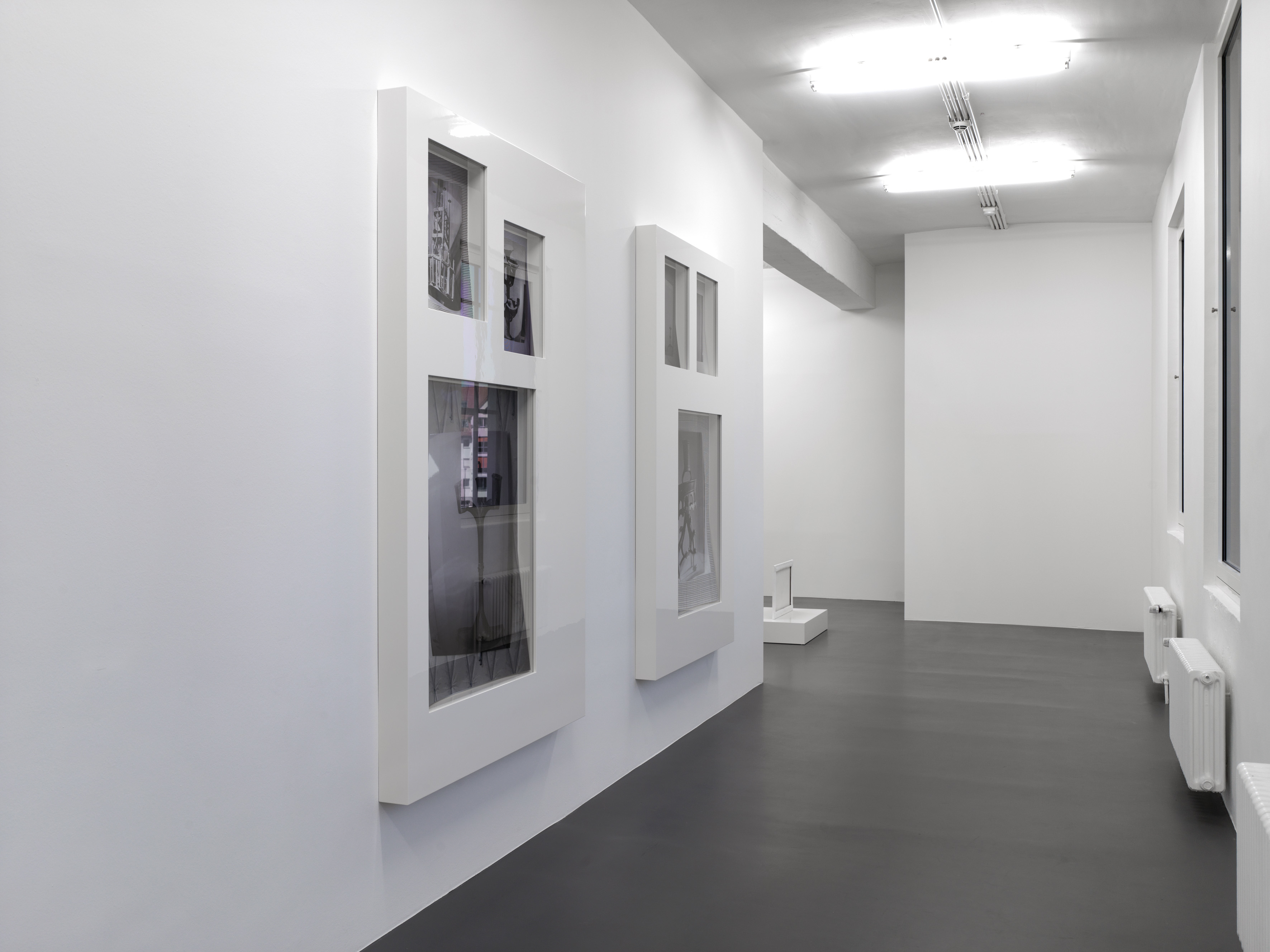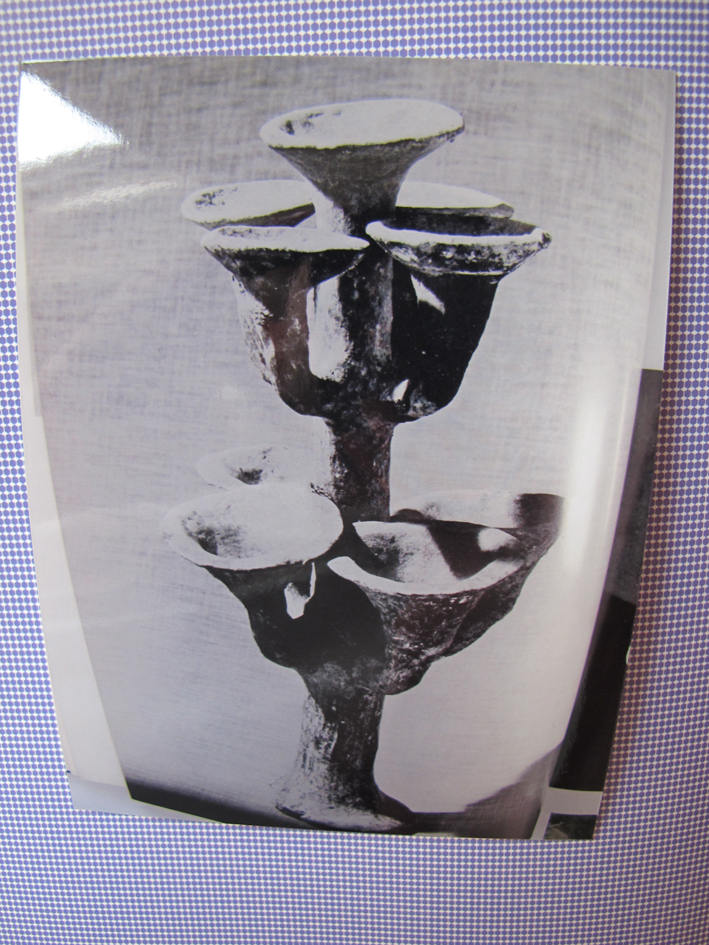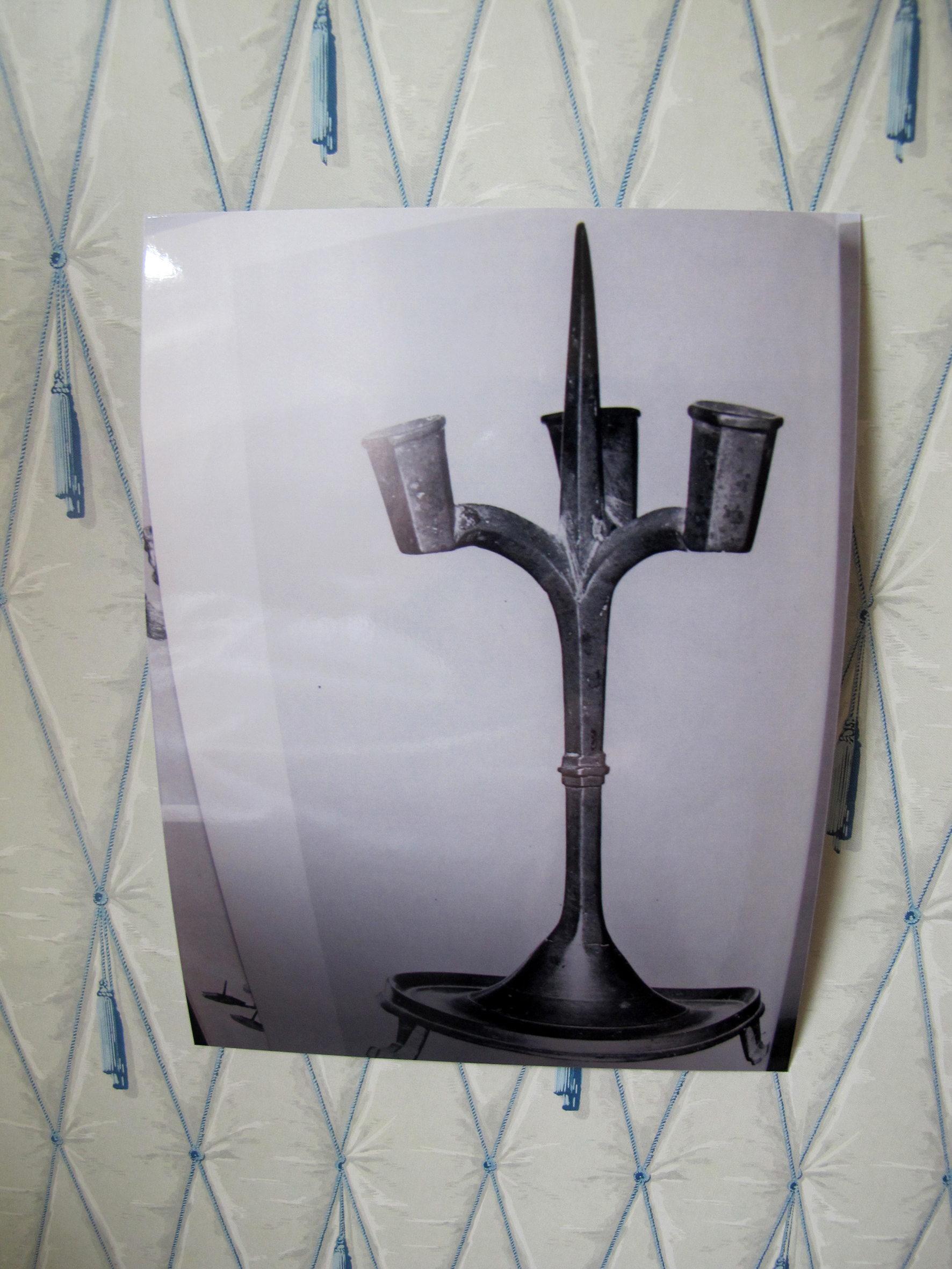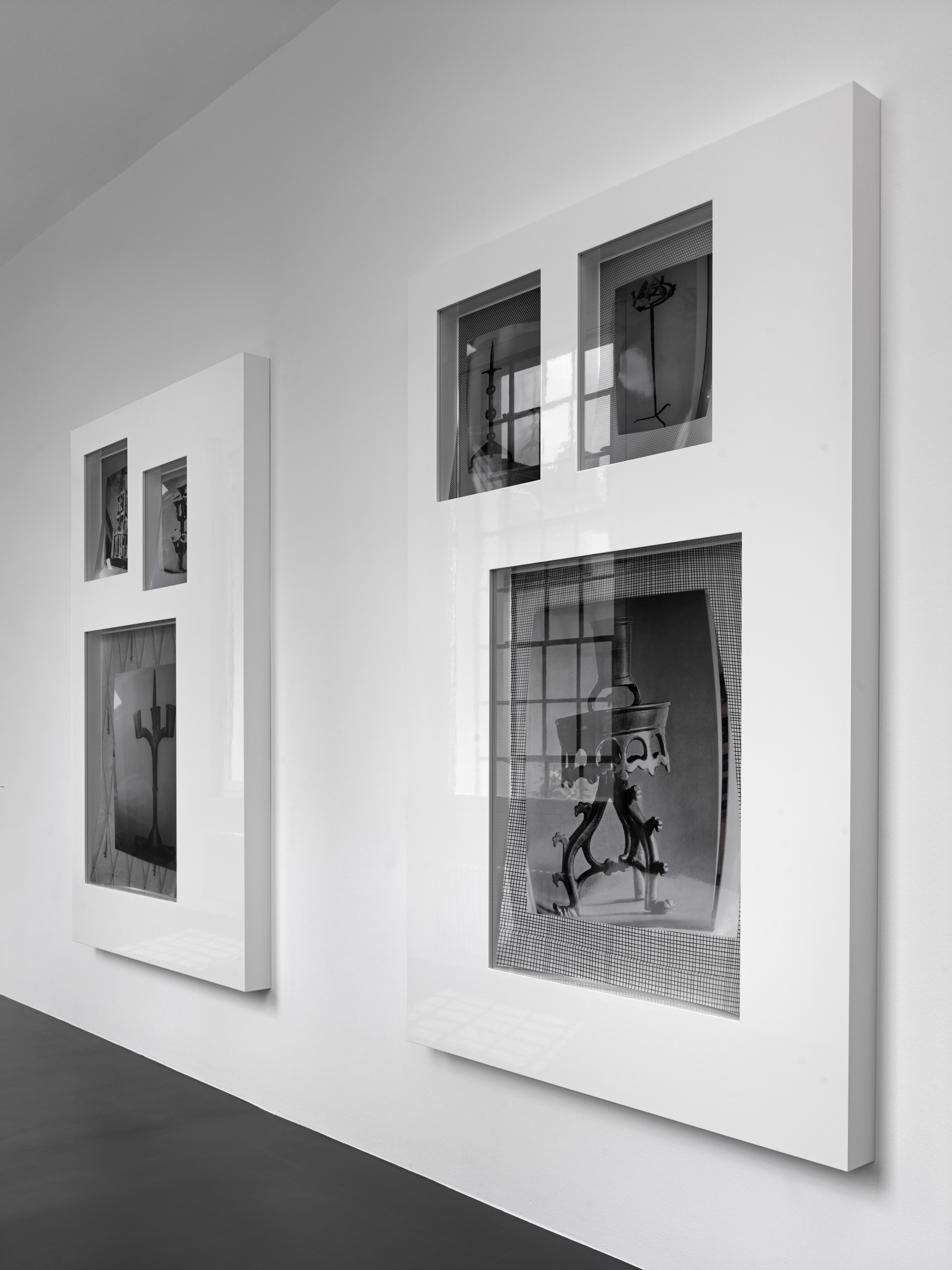BLAKER / LÜSTER
2011
The images in the installation Blaker and Lüster are the result of a multilayered photographic process. First the artist photographed selected illustrations from two secondhand books on the history of light fixtures, made prints of the shots, and then photographed each of them again. During this transformation process of the original, already strange-looking illustrations of the luminaires from the books, Westermeier deliberately reproduced breaks and distortions in each of the images taking shape. Thus we see various additional reflections of the light, spatial distortions as well as references to the original material properties of the books. For six of the themes he selected from the series, Westermeier developed a site-specific installation consisting of two large wall objects, each one for three images. In order to hang these on a wall opposite a row of large windows he then created two huge, object-like glass frames measuring 250x160x10 centimeters. Each of the massive image media feature one large-format print in the center of the lower half and two equal-sized, medium-format photographs in the upper half. The C-Prints deliberately do not fit perfectly in the frames, and are thus slightly curled behind the glass. Between the reflective materiality of the gloss-lacquered frame with its ordinary (not antireflective) glass and the window opposite, which also reflect the light, numerous reflections, mirror images and spatial distortions appear together with the slightly convex or concave prints on glossy photographic paper. Viewers encounter these various instances of refraction in Westermeier’s wall objects as they move through the space, which is like a hall of mirrors, illuminated by daylight and neon lighting. Thus, in his installation, which calls to mind outsized book pages, Westermeier doubles the effects of reflection and spatial distortion already created in the photographs. By deliberately diverting the viewer’s eye, he prompts us to look twice and in so doing traces the reception of his works back to their original inspiration, namely the discovery of strange images that kindled his curiosity.
PHILIPP FÜRNKÄS, 2012
Published in Julia Stoschek Collection,
Number Five: Cities of gold and mirrors
Ostfildern 2012
BLAKER / LÜSTER
Mixed Media Installation, 160x250x10 cm, 2011
Installation view Julia Stoschek Collection Dusseldorf, 2011, photo Achim Kukulies







Recent